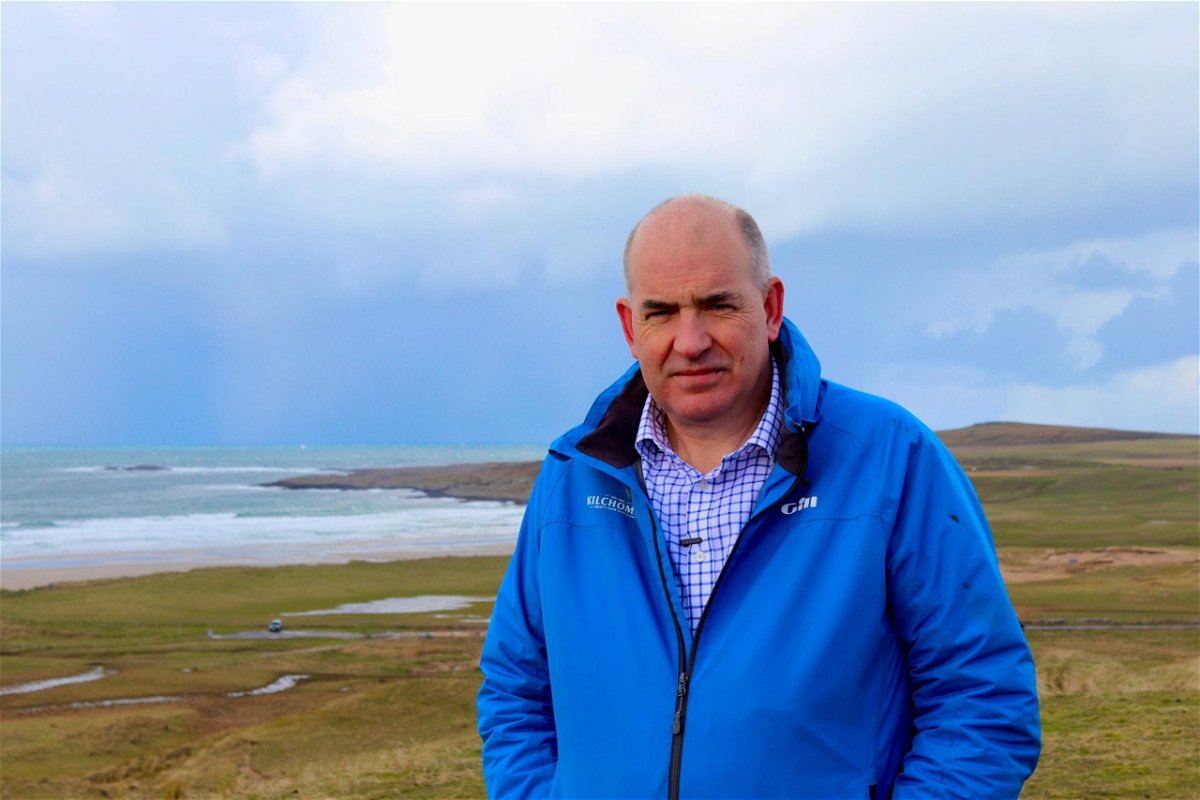The wild, remote island at the heart of a billion-dollar industry

Islay Heads
By Nell Lewis, CNN
(CNN) — The rain-lashed isle of Islay off Scotland’s west coast is not always easy to get to. Temperamental ferries run three times a day from the mainland port of Kennacraig and frequent sea mists can disrupt the small passenger planes that fly daily from Glasgow.
Even so, the island attracts hundreds of thousands of visitors from all over the world each year. What do they come for? Whisky.
Despite its small size and a population of just 3,000, Islay is home to nine – soon to be 11 – of Scotland’s 145 active distilleries. The distinctive smoky flavor of its single malt has won it fans globally. A single page from the visitors’ book at Ardbeg distillery on the south of the island lists addresses from the UK, US, Australia, Ukraine, the Netherlands, Germany, Denmark and Taiwan.
Jackie Thomson, who has worked in Ardbeg’s visitor center for more than 25 years, describes these visits as “pilgrimages” – as if there is a spiritual connection between the people and the whisky. She recalls arriving at the distillery one morning to find a man from the Tokyo Philharmonic Orchestra playing his violin by the waterfront; other fans from overseas have chosen to get married there.
Part of the reason is that when it comes to an Islay single malt, the place and the taste are so deeply intertwined. The salty breeze that blows in from sweeping white sand beaches settles in ancient peat bogs, which are harvested to fuel the kilns that dry the barley, giving the whisky its smoky, earthy flavor.
“It’s a liquid that runs through people’s veins,” says Thompson. “It’s very much part of the lifeblood and the real beating heart of Islay – you just have to go to the pub on a Friday or Saturday night and you’ll feel that very strongly.”
As well as being central to the island’s identity, whisky also underpins its economy – and represents a significant portion of Scotland’s international exports. More than £6 billion-worth ($7.5 billion) of Scotch whisky was sold across 174 markets last year, according to the Scotch Whisky Association (SWA), accounting for three quarters of the country’s food and drink exports and almost a quarter of Britain’s. Whisky tourism has also rocketed, with distilleries receiving more than 2 million visits annually, making them collectively the country’s third most popular attraction.
Islay’s own whisky production, though relatively small (according to the SWA, it accounts for around 6% of the total Scotch malt distilling capacity) is hugely valuable. Last summer, a cask of rare whisky from Ardbeg’s distillery sold for a staggering £16 million ($20 million) to an unnamed female collector in Asia – the highest sum ever paid at auction for a cask of single malt. It contained enough spirit to fill 440 regular bottles, making each one worth more than $45,000.
In a place like Islay, the news traveled fast. “There was a buzz about the island,” says Thompson. “It was talked about in the local supermarket. There was a feeling of real pride and honesty about it, that somebody wanted to pay that much for a beautiful lot of liquid from 1975.”
Boom and bust
Islay’s whisky industry has not always been a boon for the island. Its early history is steeped in stories of illicit home distilling and smuggling from dark coves. Once whisky making became a legal activity in the early 1800s, distilleries were built near the coast so that they could export their wares – hence the tradition of the white walls facing out to sea with the distillery’s name painted in black.
Periods of boom were followed by bust. In the 20th century, world wars, US prohibition and the 1929 Wall Street Crash took their toll and a global economic recession in the 1980s resulted in over-supply against demand, which led to a number of distilleries closing down – including Ardbeg for almost a decade. But these days the industry is thriving, with multinational companies such as Diageo and Louis Vuitton Moët Hennessy (LVMH) buying up some of Islay’s historic brands.
This new dawn of whisky distilling has also brought some new contenders. Kilchoman, founded in 2005, was the first distillery to be built on Islay in 124 years. It was followed by Ardnahoe in 2018, and this year or next, Portintruan and Port Ellen distillery, both currently under construction, are expected to open.
Initially, the response to the newcomers was one of surprise and skepticism, says Anthony Wills, founder and CEO of Kilchoman: “People’s mindset was: ‘Who is this guy? He must be bloody mad. Why do you need another distillery in Scotland?’” But Wills stuck to his guns, believing that there was a gap in the market for a smaller, family-run and more bespoke distillery.
So far, time has proved him right. In 2021, Kilchoman produced more than 600,000 liters of alcohol and 90% of this was exported to more than 60 markets, according to Wills. Despite being a new player, it prides itself on the revival of traditional farm distilling methods. Most Scottish distilleries use barley grown and malted elsewhere in the country, but Kilchoman is located on a 2,300-acre farm and its annual barley crop goes towards whisky production, while discarded husks are fed to a herd of Aberdeen Angus cattle. The barley is malted in the traditional way, much of the peat is hand-cut from a local bog, and the fiery liquid is distilled, matured and bottled on site. In fact, Kilchoman’s “100% Islay 12th Edition” claims to be the only Scotch whisky to be entirely made on one farm.
“It’s taking it back to how it was done in the old days,” says Wills. “You can trace everything right back to the fields here at Kilchoman.”
As the whisky industry continues to grow, keeping production local will be key to its survival, believes Kilchoman’s general manager, Islay Heads (who is named after his father, who was named after the island). “To keep traditions alive, you need people,” he says. “Traditions are things that are handed down from one generation to another.”
Like most people on Islay, Heads has strong links to the spirit. He was brought up within a stone’s throw of Lagavulin distillery, where his father worked and where he used to play as a child. His brother also works at a local distillery, and his son works in the stillhouse at Kilchoman.
“Everybody’s connected to the whisky industry,” he says. “It’s such a big employer, it’s a very important part of the Islay economy, and it drives a lot of very positive things that are happening on the island.”
There are some downsides, explains whisky consultant Blair Bowman. Tourism has swallowed up much of Islay’s housing stock in holiday lets, with some locals being priced out. But he notes that the industry has also created a number of jobs, which attract young islanders to stay and work there – more than can be said for neighboring Hebridean islands that struggle with declining populations.
To keep locals happy, distilleries need to invest back into the island, Bowman says, referencing Ardbeg’s decision to donate more than $1 million to the community after its record-breaking sale. “It was a good opportunity for them to show that they couldn’t have achieved this massive milestone without the island and without the people,” he says.
On a visit to Islay, it is hard to ignore the overwhelming sense of pride locals have in their craggy isle’s global reputation. Today, a wee dram of Islay’s single malt can be ordered at most bars in most cities around the world – and a sip of it will transport you right to where it came from.
“I’m very proud to be ‘Ileach’ (somebody from Islay),” says Heads. “I’m very proud of what Islay brings to the world through its whiskies.”
The-CNN-Wire
™ & © 2023 Cable News Network, Inc., a Warner Bros. Discovery Company. All rights reserved.



